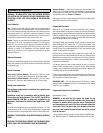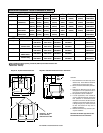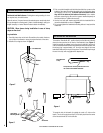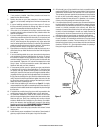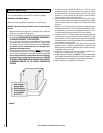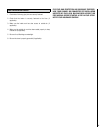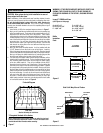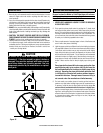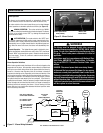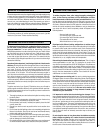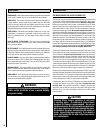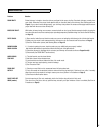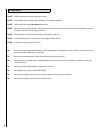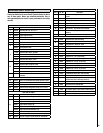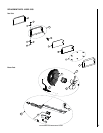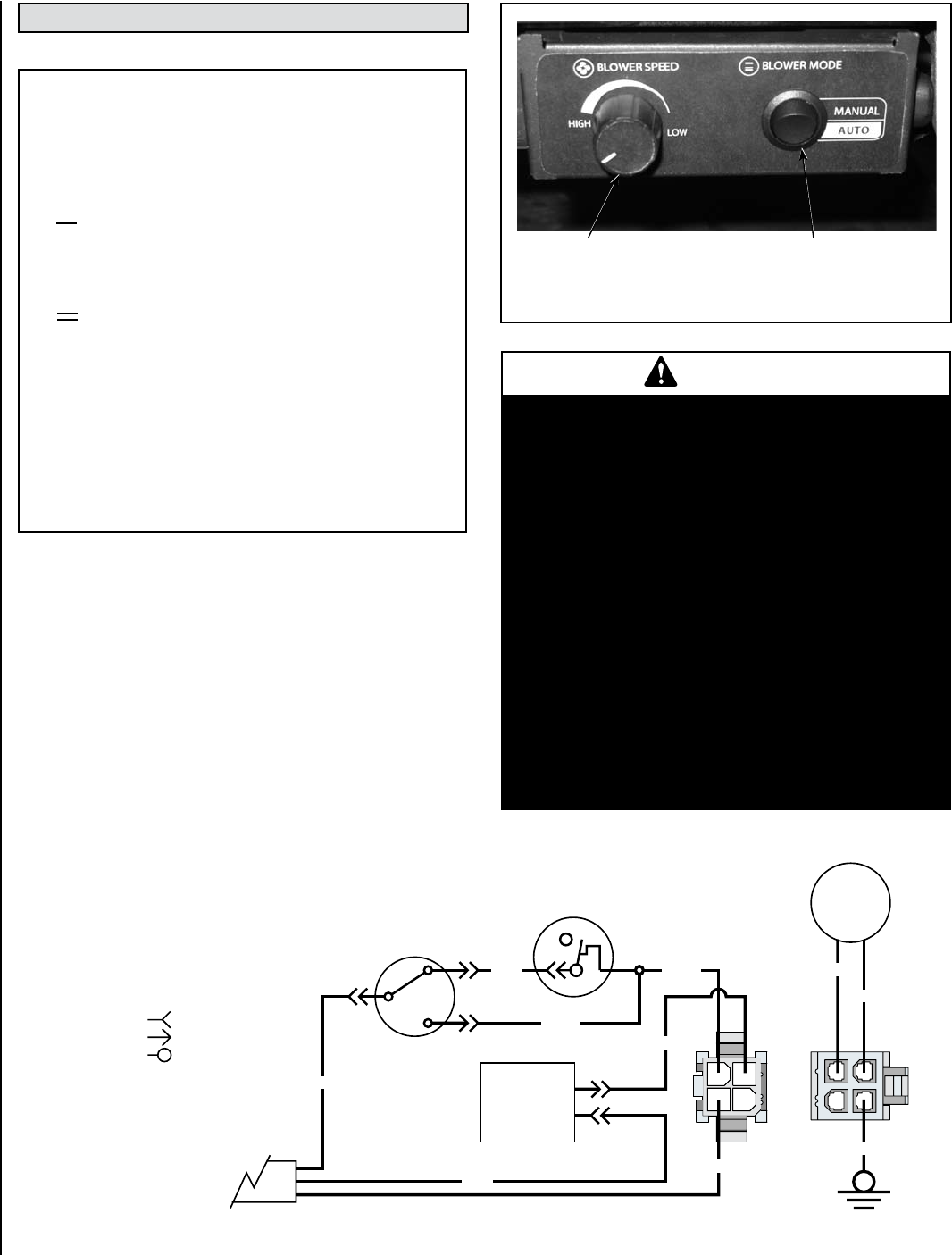
14
NOTE: DIAGRAMS & ILLUSTRATIONS ARE NOT TO SCALE.
WARNINGS
The blower must be plugged directly into a properly
grounded three-prong receptacle, 120 VAC, 60 Hz, single
phase. Do not cut or remove the grounding prong from
this plug. Do not route power cord under or in front of
appliance.
Installation must be in accordance with National Elec-
trical Code, ANSI/NFPA 70 - latest edition. In Canada,
the current CSA C22-1 Canadian Electrical Code - latest
edition.
DANGER: Disconnect power before servicing blower.
In the event that you remove the blower for any reason,
make sure a cover plate (available from Lennox Hearth
Products) is installed before using the heater. Excessive
rear wall temperatures will result if the stove is burned
without the cover plate. The cover plate is not necessary
if a blower has never been installed because a knock-out
will be in place to act as the cover.
ROOM AIR
BLOWER
SPEED
CONTROL/OFF
TWO POSITION
SWITCH
MANUAL/TEMPERATURE
AUTO-RESET
TEMPERATURE
SWITCH N/O
POWER CORD
3-RED
3-RED
YLW
BLK
WHT
4-GRN
1-BRN
1-BRN
4-GRN
3-RED
NOTE: SWITCH CONDITIONS
GIVEN AT ROOM TEMPERATURE
N/C = NORMALLY CLOSED
N/O = NORMALLY OPEN
= FEMALE DISCONNECT
= MALE DISCONNECT
= STUD CONNECTION
Blower Operation Guidelines
While in auto operation mode, the blower will turn off and on based on the
temperature of the stove. Auto operation ensures there is sufficient heat
build-up to warm the air being moved by the blower before the blower is
turned on. Likewise, when the stove cools off, the blower is turned off
to prevent circulating cool air. Depending on the size and intensity of the
fire it may be necessary to adjust the fan speed accordingly to ensure un-
interrupted fan operation. For example a small fire may require a slower
fan speed to keep the heat output by the fan consistent. If the blower is
operated in manual mode, it may be necessary to adjust the blower speed
as the fire begins to burn down and the stove is no longer hot enough to
effectively heat the air moved by the blower. If the air coming from the
blower feels cool, one should either decrease the blower speed or stoke
the fire to build up more heat.
BLOWER OPERATION
Figure 12 - Blower Controls
Blower Speed Control
Knob (rheostat)
Manual / Auto
Rocker Switch
Blower Operation
The blower can be operated manually or automatically (blower will
turn on when the stove is hot and turn off when the stove is cool).
The rocker switch on the control panel allows you to select between
manual operation or automatic operation as follows (see Figure 12):
MANUAL OPERATION: Turn rocker switch to the “MANU-
AL” position and adjust rheostat knob to the desired speed. The blower
will have to be manually turned “OFF” by rotating the rheostat knob
clockwise until it clicks.
AUTO OPERATION: Turn rocker switch to the “AUTO” posi-
tion and the rheostat to the ON position (rotate rheostat knob coun-
terclockwise until it clicks). When the stove warms up, the blower will
automatically turn on (adjust rheostat knob to the desired speed set-
ting). When the stove cools down, the blower will automatically turn
off.
Rheostat Operation - The highest blower speed is obtained by turn-
ing the rheostat knob counterclockwise until it clicks “ON”, then rotate
towards “HIGH” to increase blower speed. Rotate the knob clockwise
for a lower speed. To turn off, continue to rotate the knob clockwise
until it clicks “OFF.”
Figure 11 - Blower Wiring Schematic



